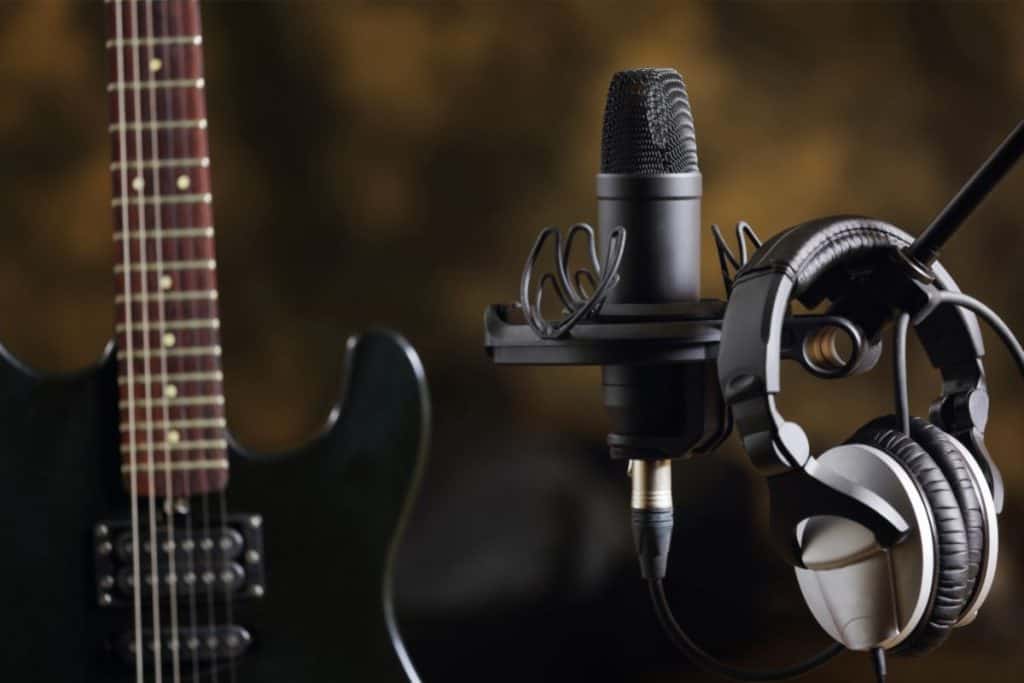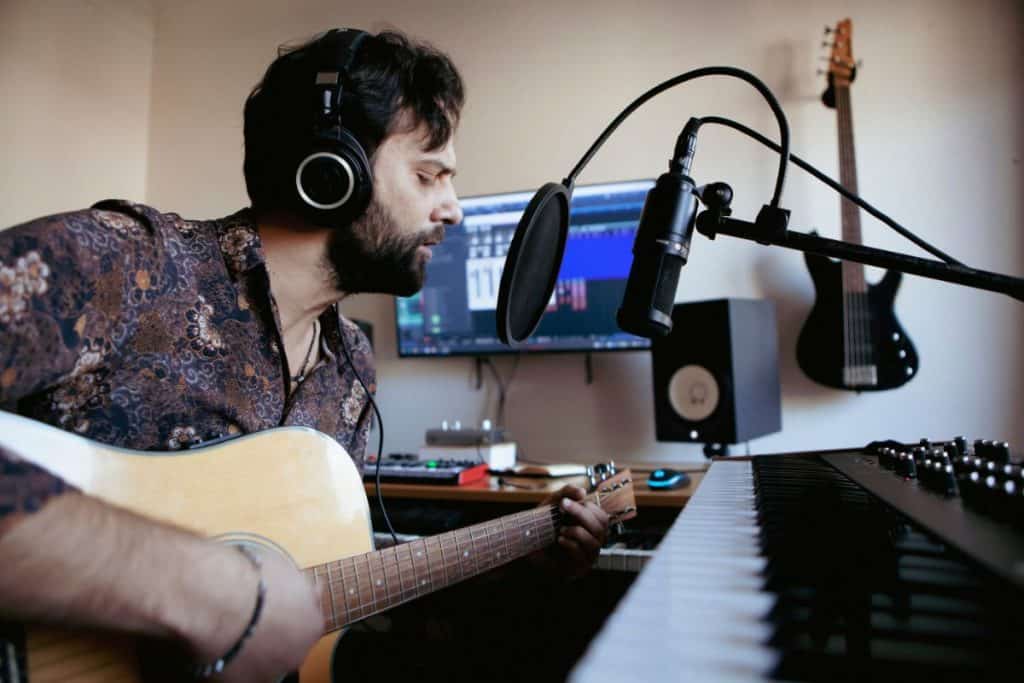So, you’ve been playing and practicing with your electric guitar for a while now. You feel like you’re starting to get the hang of it, and you’re starting to experiment a little with your style of music.
Not only that, but you’re feeling that it sounds pretty good right now too! You’re feeling comfortable enough that you’re thinking about recording it.

Well, firstly, congratulations on getting this far! Many guitarists never quite build up that confidence to take the next step to record their music and send it out there.
Arguably, you’ve already made one of the toughest decisions that a musician can make, so take pride in that fact.
Now comes the second-hardest thing you’ll have to do so far: Figuring out how to record your electric guitar.
For many people, that can mean having to book a slot in a professional recording studio, to get the best experience for yourself and to get the best quality sound for your electric guitar recording.
And while that is certainly an option you can go with, don’t jump blindly and headfirst into this option if you are a little hesitant. This can be an expensive option that not every guitar player can afford, which, for many guitarists starting, can be a real issue.
There’s also the fact that, if you are completely unfamiliar with recording setups, you’ll spend some or most of it just coming to grips with the recording software itself, wasting both your time and your money.
Fortunately, a recording session doesn’t need to be nearly this painful. Not only can recording not be a massive sinking cost on your budget but with the right tools, it can even be done in your own home!
This guide is here to take you through some of these steps for home recording, as well as some helpful tips that might help make your recording journey easier.
Equipment You Will Need For Electric Guitar Recording
Of course, if you are planning on recording from home, then you’re going to need some extra equipment to do that with. This list contains all the essentials that you will need to get started for electric guitar recording at home:
- Electric Guitar
- A guitar amplifier (either analog or digital, depending on your needs and preferences.
- Guitar impulse response or cabinet
- A computer to record your sounds too.
- An audio interface, to get the best possible sound quality.
- And a microphone, for obvious reasons!
Ways To Record Your Electric Guitar
There are a few ways that you can record your music from your home.
Whilst more equipment might seem like the way to go at first, there are a surprising number of ways that you can record your electric guitar, without spending too much cash.
Placing Your Microphone In From Of Your Guitar
This is probably the simplest way that you can record your electric guitar, as there is the least amount of extra prep work required to do it.
You’ll need to start by connecting your electric guitar to your amplifier, ideally with an instrument cable that is a quarter of an inch.
Then, place the microphone you are using lose to your cabinet speaker. If you have a short mic stand, this will be very helpful in positioning the mic stand at an optimum height and angle.

Once this is done, you can connect your microphone to the amp socket of your audio interface. Then you’ll be able to connect it to your computer or laptop. USB is the most used method, but Firewire and Thunderbolt are also popular.
Once you have opened a new window in your digital audio software, you can start recording!
This is by far the easiest way to record, and great for virtually any skill level.
Using An Isolation Box When Placing Your Microphone
If you feel that there may be some issues with high volume in your recording space, then you might find an isolation space or cabinet useful whilst you record. This allows you to place your speaker and microphone inside a noise-reducing or canceling box so that you can get the clearest sound with these tools.
Whilst some manufacturers make professionally built isolation boxes, there are also many tutorials online on how you can make your own. We have linked just such a tutorial here.
Once you have your isolation box, the rest is as simple as setting up like you normally would with your audio interface and microphone, only this time, the speaker and mic are inside the box.
Tips For Recording Your Electric Guitar
Make Sure That Your Guitar Is Tuned Properly
This might sound like an obvious piece of advice, but you’ll be surprised just how many people forget to make sure that their instruments are tuned before recording, and the noise they create comes out slightly off.
This makes them believe something in their recording setup when in reality, it is something much more mundane and common.
Make Sure To Check Your Recording Room’s Sound Levels
This point is also pretty intuitive. You want to make sure that there aren’t any loud noises going on in the background whilst you are recording that might interfere with your final recorded audio.
But also, it is helpful to check your sound levels just as a common courtesy for those around you.
Unless you live in a relatively isolated area or room of your home, the chances are that your electric guitar recording is going to be heard by pretty much everyone around you, and could be disturbing and interrupting others.
This is why many people choose to buy or build isolation boxes and cabinets so that they don’t have to worry nearly as much about your electric guitar levels spilling out into your neighbor’s homes.
Final Thoughts
As you can see, the methods for recording we have talked about are relatively simple and don’t take a whole studio to do. Hope this helps you in your recording session!
References
Recent Posts
QuickTime is a vital app for many Mac users, and if you’ve recently bought a new microphone, you might wonder how to use it optimally. QuickTime cannot record audio content if it doesn’t have...
Every microphone leaves a unique signature on the quality of its output. If you’re a podcaster trying to melt your way into your audience’s hearts, a muddy, distorted recording won’t cut it....
